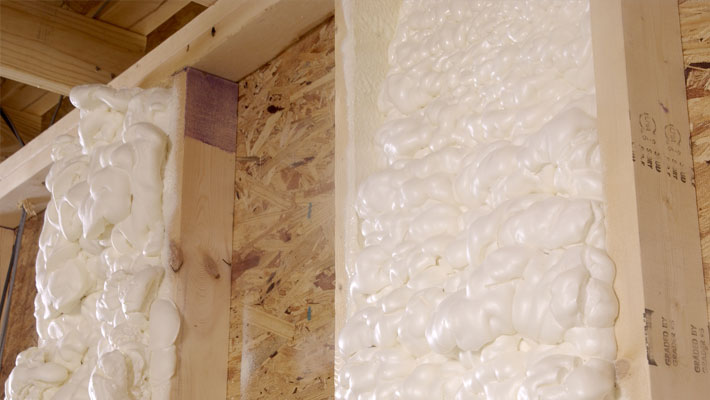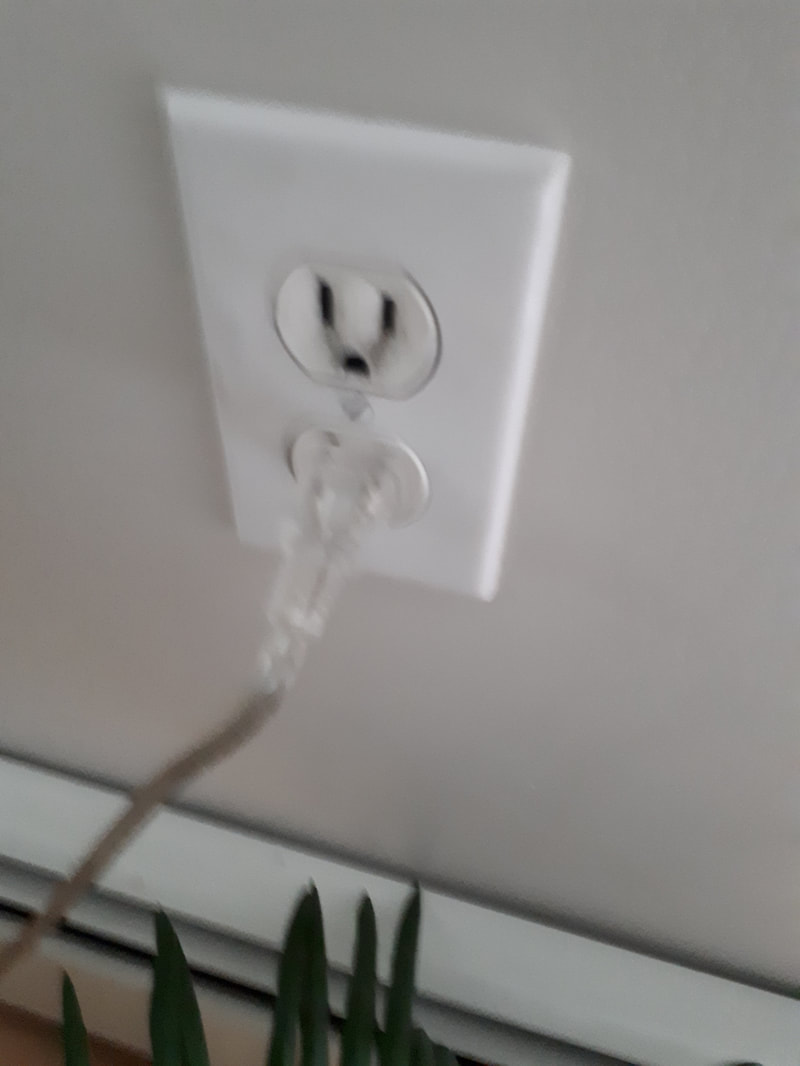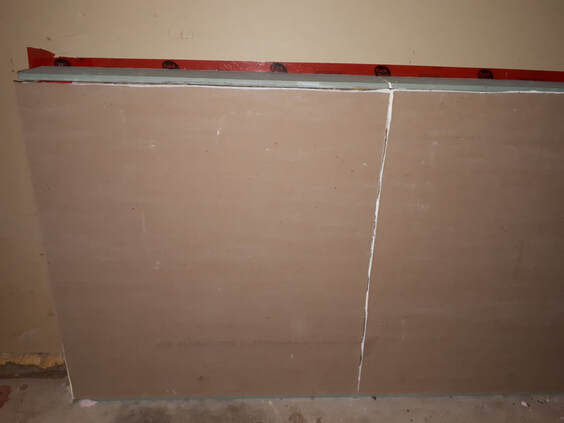Mike's Home Inspector BlogMichael Burfitt |
|
It’s always fun to peek my head into another attic, where many mysteries can be solved: what type of wood is the home constructed of, is there evidence of structural damage, moisture, and pests, or even previous fires, and what is the type of insulation and ventilation. Homes require ventilation and the attic is no exception. There are three basic types of ventilation seen in the attic: soffit, ridge, and gable. Proper ventilation is important for many reasons:
You might think the biggest problem I run into is a lack of ventilation. It’s actually the opposite, with too much ventilation! Yes, there is such a thing as too much. Less is (Sometimes) More! The biggest issue I see is a home that has all three types of vents. This is usually because when roofers do a roof job, they frequently add a ridge vent. Great idea, but it ignores one of the main principles of building science: balance! The issue is known as an attic short circuit. Like an electrical circuit, air flow will follow the path of least resistance. Home builders understand this and know how to balance ventilation (usually 1:300 of the total roof area) between intake (usually soffit vents) and exhaust ventilation (usually ridge vents). While disagreements can result about closing off gable vents when installing ridge vents, the fact remains that a home is a delicately balanced system, and the attic space is no exception. What To Do About It?
The answer is that is a favourite one among lawyers: it depends. If there is no sign of moisture, mould, or condensation it is probably best to leave it alone. If, however, there is clear and obvious organic growth, it is time to take action. Attic spaces should not have visible mould or moisture and a roofing or insulation contractor can provide guidance on the best way to correct this. Remember, simply removing mould isn't good enough: it WILL return unless the root cause is identified and corrected. Luckily, this is an area where I rarely see problems as usually only skilled professionals work in attic spaces. In Nova Scotia, our unique climate demands careful consideration when it comes to keeping your home cozy and energy-efficient. Insulation plays a crucial role in maintaining indoor comfort, and understanding the various types available can help you make informed decisions for your property. Here’s a quick look at a few types of insulation I have seen during home inspections. Fibreglass Insulation This is the most common type of insulation I encounter. The two most common types of this type of insulation are loose fill and batts. Advantages Cost-effective: Fibreglass insulation is generally more budget-friendly than some other options. Easy installation: It is available in batts or rolls, making it easy to install between wall studs and in attics. Effective thermal performance: Fibreglass insulation resists heat transfer, keeping homes warm in winter and cool in summer. Disadvantages Prone to settling: Over time, fiberglass insulation may settle, reducing its effectiveness. This can be further accelerated by being walked on. Can be irritating: Handling fiberglass can cause skin irritation, requiring proper protective measures during installation. Spray Foam Insulation There are two basic types of foam insulation: open cell and closed cell. Advantages Excellent air sealing: Spray foam forms a tight seal, reducing air leakage and enhancing energy efficiency. Versatile applications: It can be used in attics, crawl spaces, and walls for comprehensive insulation. Long lifespan: Spray foam is resistant to settling, providing long-lasting insulation. Disadvantages Higher cost: Generally, it is more expensive than traditional insulation materials. Professional installation required: Proper application of spray foam demands expertise, necessitating the involvement of skilled professionals. Rockwool (Mineral Wool) Insulation
This type of material is commonly used in commercial properties. Advantages Fire-resistant: Rockwool provides an added layer of fire protection due to its composition. Acoustic insulation: It offers soundproofing properties, enhancing overall comfort.This is one reason why many commerical properties use Rockwool between tenant spaces. Good thermal performance: It is effective in maintaining indoor temperatures in variable climates. Disadvantages Higher cost: Rock wool insulation can be more expensive compared to other options. Heavier than some alternatives: Its weight may be a consideration, especially in certain construction scenarios. Choosing the right insulation for a Nova Scotian home involves weighing the advantages and disadvantages of each material. Consultation with a local insulation professional is key to making an informed decision based on your specific needs, ensuring your home remains comfortable and energy-efficient throughout the seasons. Five Golden Rings of Electrical Safety Electrical is probably the most important part of an inspection: while there is no doubt there is an issue when there is a waterfall in the kitchen or a large horizontal crack in the foundation, electrical issues can be difficult to detect by the untrained eye. Here are five that I always look for: Single strand aluminum branch circuits: Not all aluminum wiring is problematic; it's commonly used for electrical conduction due to its cost-effectiveness and lightweight nature. I also look for Knob & Tube (K&T) although it has largely been removed and replaced over the years. Inspection of Electrical Receptacles: Checking a representative sample for missing grounds, reverse polarity, and signs of arcing, such as burn marks. Reporting on the status of Ground Fault (GFCI) and Arc Fault (AFCI) Circuit interrupters: Building and Electrical Codes evolve; retroactive changes are rare. In spite of this, I always suggest updating electrical systems to the latest standards. Assessing DIY Modifications: Any signs of makeshift "improvements," like the use of extension cords for permanent power supply, are noted. System Overview: Assessing the entire system for adequate amperage, checking for undersized wires (oversizing is acceptable but wasteful), and ensuring no reasons exist for the power utility and insurance company to refuse service to the home. Six Geese-a-Laying Insulation Tips In older homes, insulation sometimes becomes an issue due to DIY attempts. While modern homes adhere to updated building codes, some retrofits fall short. For instance, in one inspection of an older brick house, the added insulation was carelessly installed, defeating its purpose. Remember, proper insulation traps air in pockets; compressing it renders it ineffective. Wet fiberglass insulation? Only fit for the trash. More insulation is beneficial, but not when compressed to squeeze more in. Seven Swans-a-Swimming in Plumbing
Plumbing installations by professionals are generally sound, but ongoing maintenance is crucial. Homeowners need to realize that sinks and drains aren't infinite voids. Disposing of inappropriate materials like baby wipes or bacon grease can lead to plumbing issues brewing for years, suddenly surfacing as household disasters. Eight Maids-a-Milking Moisture Concerns Moisture is the ultimate nemesis of homes, fostering rot, mould, and significant damage. The following proactive measures are key:
Stay tuned next week when we conclude this Christmas theme blog and look at four more inspection items. At this time of this writing in the fall of 2022, housing prices are beginning to fall in Halifax. That is of course good news but the simple fact is that, when factoring in higher interest rates, housing remains unaffordable for far too many people in Nova Scotia. Rightfully, some people are looking for alternatives to the sky-high cost of housing and one such up-and-coming trend is that of shipping container homes. Sounds like a great way to build a home at a great price, right? Not so fast! It certainly sounds appealing: a disused shipping container can be purchased for only a few thousand dollars and is constructed mainly of solid steel. They have literally been around the world multiple times in all weather conditions and are built to last. This however does not mean they necessarily translate to a solution to the housing crisis. What’s Wrong with Shipping Container Homes?
The biggest issue is that they are small. They are a decent height for those not over 6’6” (like almost everyone but me) at 8.5 feet and are plenty long (usually 40 feet) but are a mere 8 feet in length. That doesn’t sound terrible until you consider that…. Homes Need Utilities! A home is a complex system of interdependent components: electrical, plumbing (both supply & waste) and heating, ventilation & air conditioning (HVAC) pipes that run behind the walls in all homes (and are required by all building codes)! This means that a significant portion of the interior space needs to be dedicated to these items, further reducing the living space. Speaking of HVAC…... Metal is a Conductor of Heat AND Cold When I was a teenager, I occasionally helped load shipping containers that were bound for various projects in Northern Africa. On one hot day, we measured 52 degrees Celsius inside the container! It was like being in an oven and while I wasn’t loading anything that day, I tried to see how long I could last. It was less than a minute before I started sweating uncontrollably and I had to leave. Metal is a conductor both of heat and cold and we certainly get both extremes in Nova Scotia. Neither air conditioning nor high R insulation are required in our province, but I don’t see how one can survive without them in a shipping container. That’s not even getting into…. Shipping Containers are (Not) Really Strong Shipping containers are strong and heavy, right? Think about it: they are stacked 9 high on ships and face countless treacherous weather conditions in the open sea. However, unlike goods, people need air! (windows & doors). You might think that it’s as simple as cutting a few holes in the steel, but the fact is that these containers are designed to transfer all the weight to the ends, so cutting a hole for a window requires structural reinforcement. Furthermore, many Engineers, Architects and Contractors refuse to work with shipping containers as they are not familiar with them (and that goes for home inspectors too!) and consider them too high a liability to work on. An Important Disclaimer I am NOT in any way an expert on construction of shipping container homes and there are some advantages that I did not touch on. As well, you may be reading this in the future and this type of construction might go mainstream with improvements in construction techniques. I am just pointing out that in 2022, the cost savings can be quickly wiped out with all the expensive modifications required to make containers habitable. I am in favor of anything that can make housing affordable to everyone on the planet but while on the surface this seems like the ideal solution there are too many disadvantages to this type of construction to consider it a viable option at this time. There is no such thing as a perfect home, and yes that includes my own house. Here are 3 subtle defects I found after moving in (and before I became a home inspector). Can you spot the issues? This is what appears to be plain, ordinary insulation in the basement. The problem doesn’t lie with the installation or the R (insulating) value, nor is there a problem with mould or cold air infiltration and there is nothing wrong with using the red sheathing tape. The problem lies in the fact that this type of insulation is known as extruded polystyrene, which like all plastics is derived from petroleum by-products. As such, while it can be hard to ignite, once a fire has started it burns very rapidly with highly toxic smoke. As it is located in the basement, it would be nearly impossible to detect before the fire got out of control. Solution: this type of insulation needs to be covered by a fire barrier, such as I have done here with drywall. This simple action can greatly reduce the spread of fire, allowing for precious minutes to take action. This is a door frame that was walled over. How do I know this was added later and is not part of the original construction? Not only is the wood slightly different, but the plastic vapor barrier is missing over the former doorframe. This barrier is designed to keep wood and concrete from making direct contact, and having moisture travel up from the concrete into the wood by capillary action, which will reduce the wood's lifespan by promoting rot and mould growth. Below is proof that moisture is travelling up: you can see a moisture content of 10% compared to 6% to a nearby section of the wall with a proper moisture barrier. Generally, we start worrying when the moisture content hits 20% as that is conducive to rot and mould growth. Solution: given how the moisture content isn't in the "danger zone" it is easier (and cheaper!) to just leave this alone, especially since this is not a new home. If this wood needs to be replaced in the future a plastic barrier such as polyethylene will be installed first. This is from our basement where the washing machine is connected. All electrical receptacles within 5-6 feet of any water source need to have ground fault circuit interrupter (GFCI) protection as water and electricity do not mix. Solution: I replaced this receptacle with the proper GFCI unit and while you may have noticed it was installed “upside down” it is 100% acceptable to install them upright, upside down or even sideways. I have inspected houses that appeared on the surface to be perfect, only to discover similar issues that aren't always apparent. This is just one of many examples of why I love being a home inspector!
One of the questions frequently posed to home inspectors is if a home can fail an inspection and if so, how often do homes fail? The simple answer to that is no: we are independent consultants, not municipal code compliance officers and do not condemn homes. Every client has different expectations and what their tipping point is and will have to make that decision for themselves and as home inspectors we provide the necessary knowledge and facts. Yes, there are a number of issues that are very serious and difficult if not impossible to remedy at a reasonable cost but luckily, they are rare in my experience. One of the ways I accomplish my goal of providing detailed information and organize my reports in a way that is easy to understand is to provide an action list at the end of each report. I then organize tasks based on what I consider the priority level: every inspector is different, but I personally break down my recommendations into four basic categories: In reality, while these specific examples look easy to categorize in many cases a great deal of judgement is used in making proper recommendations. One such example is a cracked foundation: a crack can be a sign of anything from a cosmetic nuisance right up to a symptom of complete structural failure. Luckily the overwhelming majority of cracks are minor but as a home inspector we can advise whether the services of a structural engineer or other specialist should be sought.
As a volunteer first responder, possibly the most important skill other than immediate life-saving actions is to not only report and observe but also to understand when an issue needs further attention and if so, what form it should take: many issues look serious on the surface but are relatively minor while others are only serious to the trained eye and need immediate attention. Developing this skill has served me well as a home inspector too, where I am able to put issues in the proper context, not overreacting or underreacting to what I see. Home inspector's reports do not have a grade and there is no such thing as pass or fail but there are issues with various degrees of seriousness in each and every home. This is why I promote and recommend regular maintenance inspections: we can help you avoid surprises and to plan and budget for preventative maintenance on your terms. |
Archives
July 2024
Categories
All
|
|
Inside Edge Home Inspections Ltd.
Halifax, NS 902-209-9921 [email protected] Proudly Serving the HRM & Central Nova Scotia |


















 RSS Feed
RSS Feed

